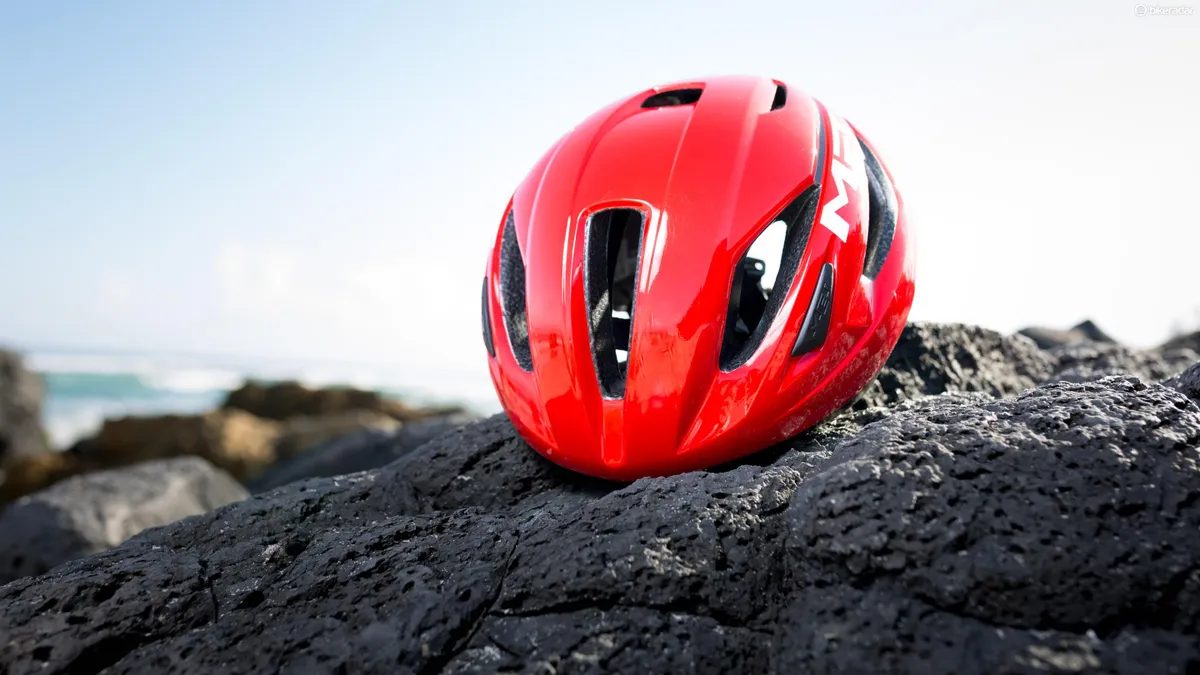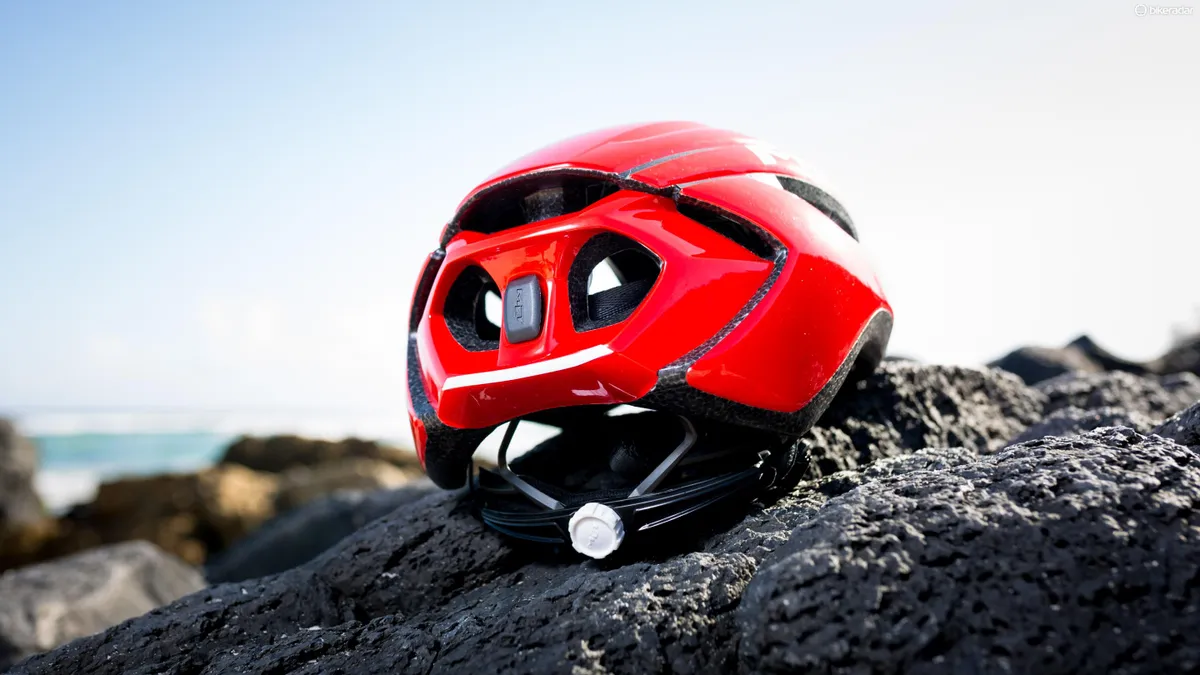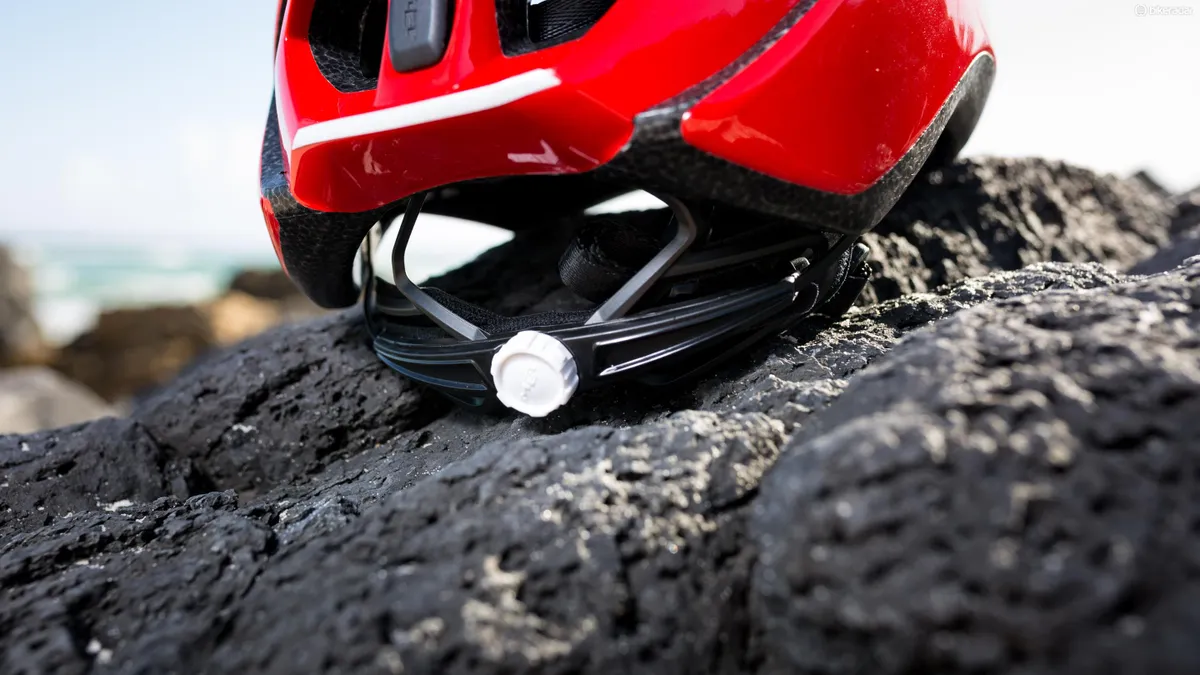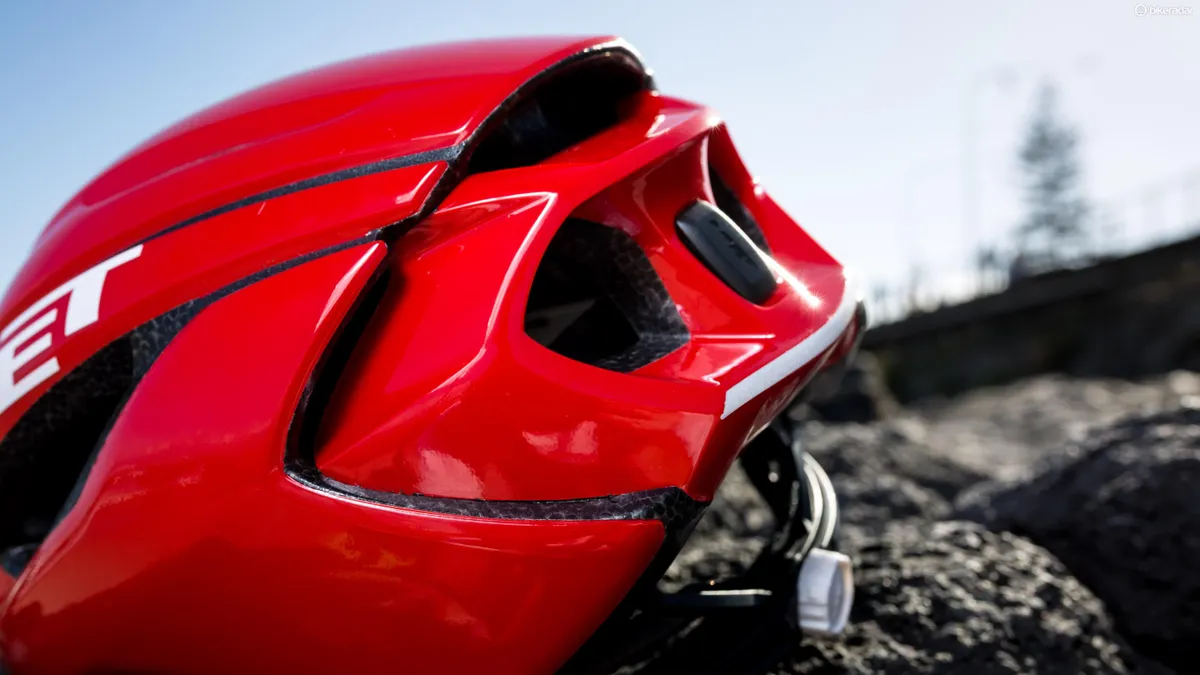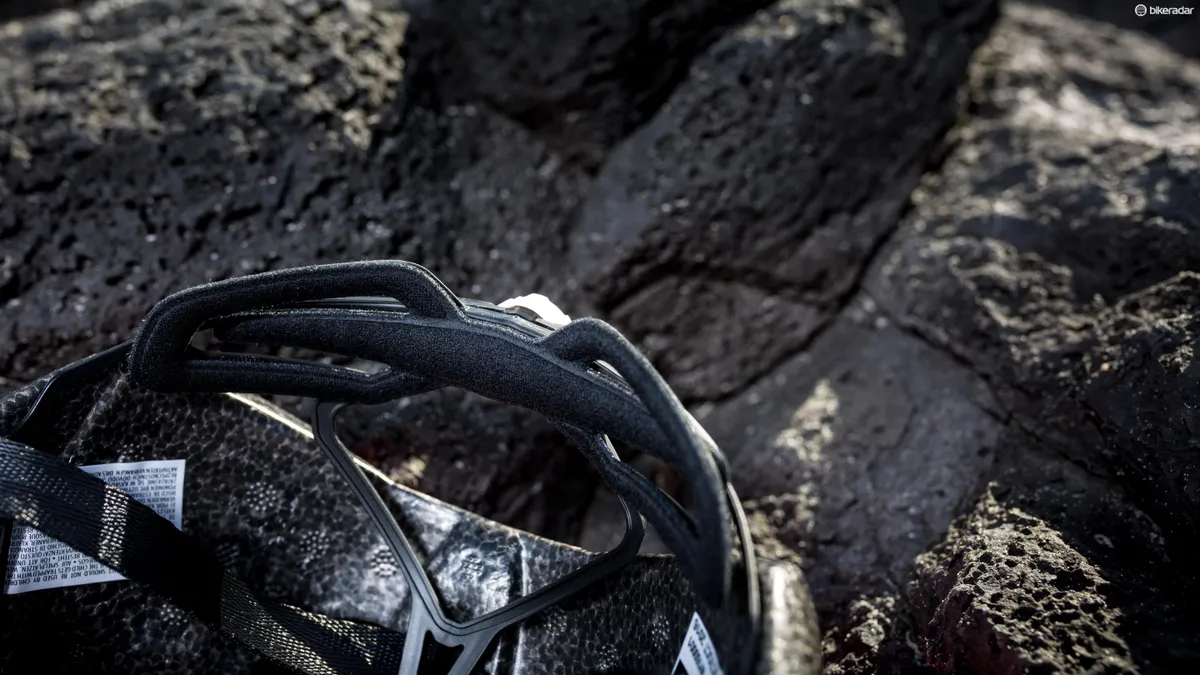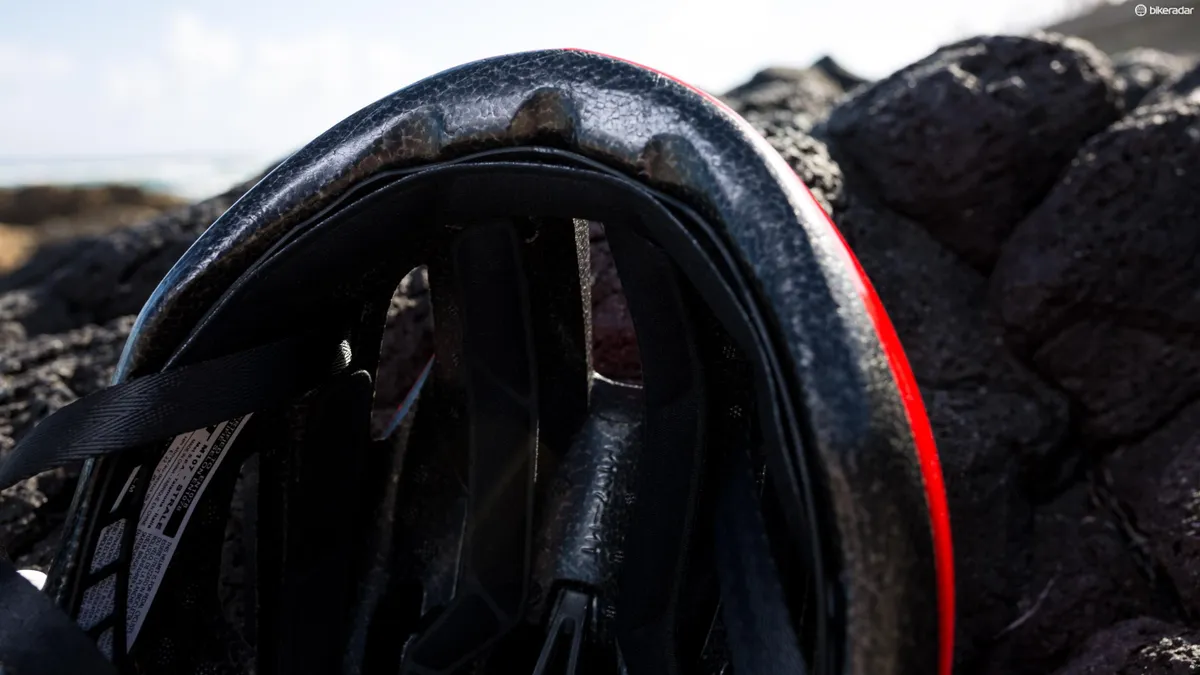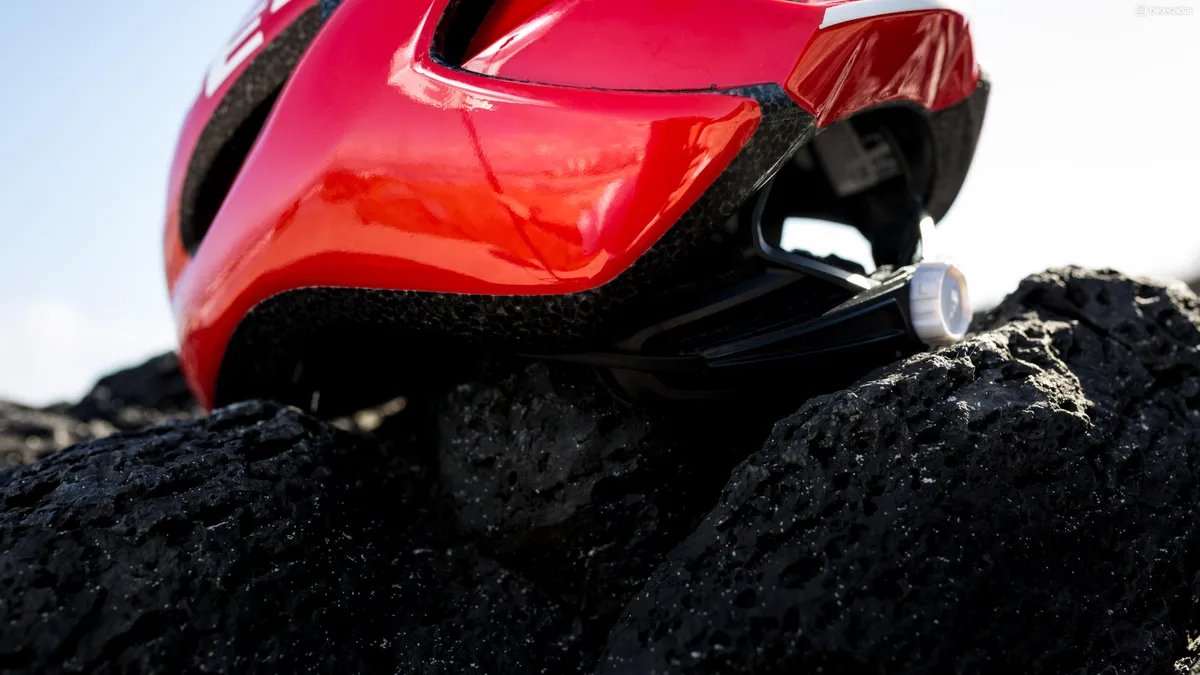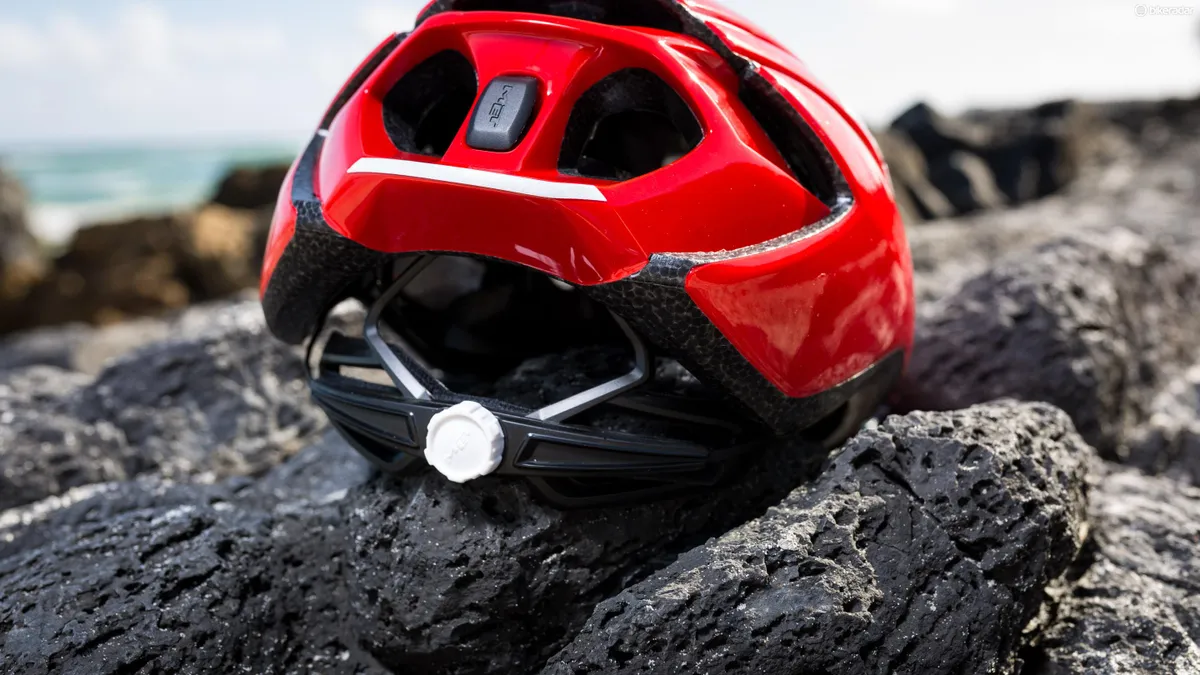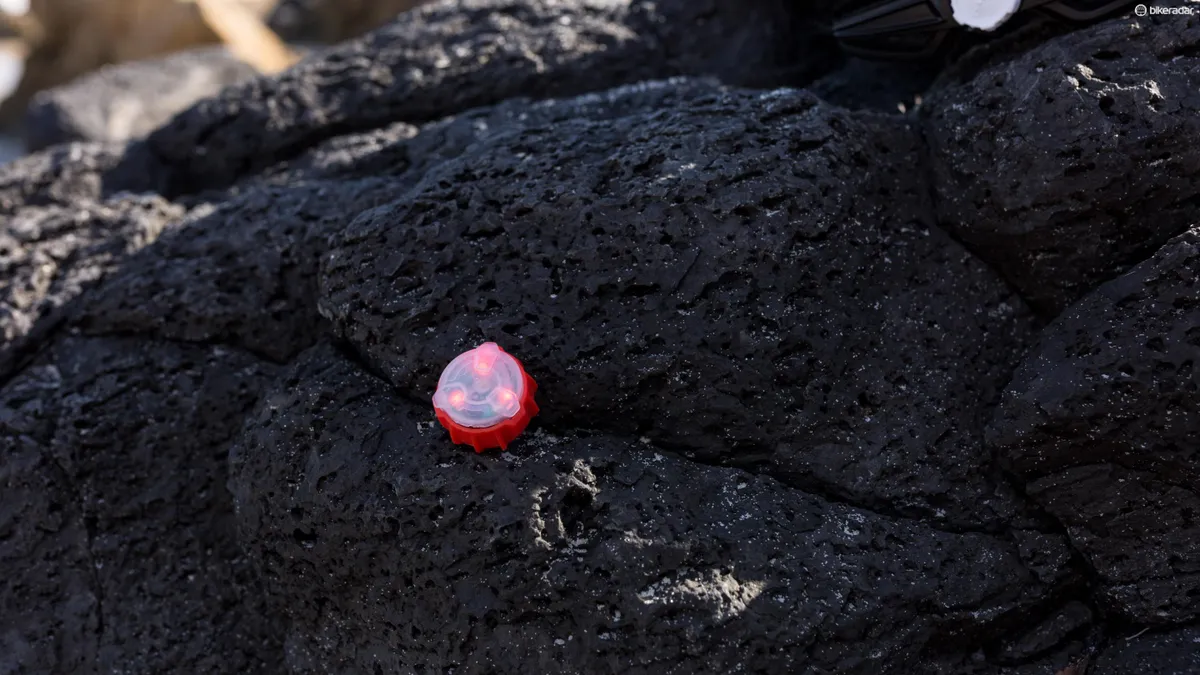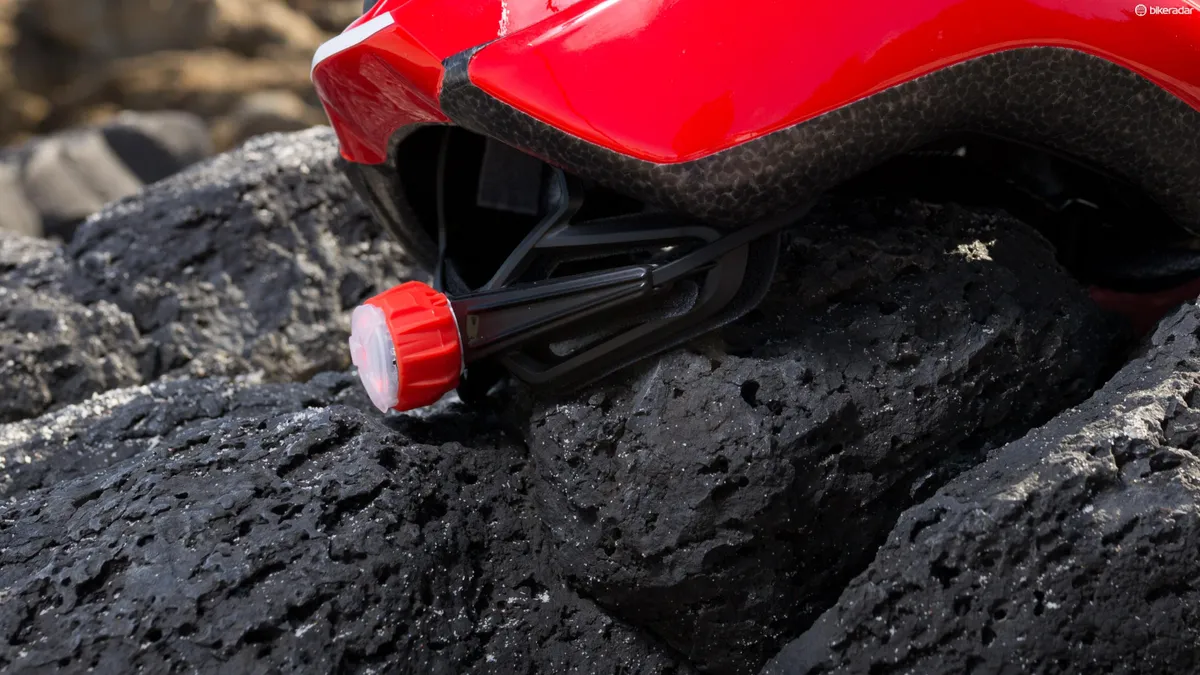The MET Strale is the brand’s latest helmet and has been designed around something called the Venturi effect — a fluid dynamic principle that says when a fluid hits a choke point its velocity will increase — and air enters the helmet through the vents at the front to be channelled through the helmet and out the back, which according to MET should speed up the ejection of hot humid air from the rear exhaust ports.
The MET Rival works on the same principal and when we reviewed the Rival last year, our tester was impressed by how well it worked, with the deep channels keeping the relatively closed lid airy.
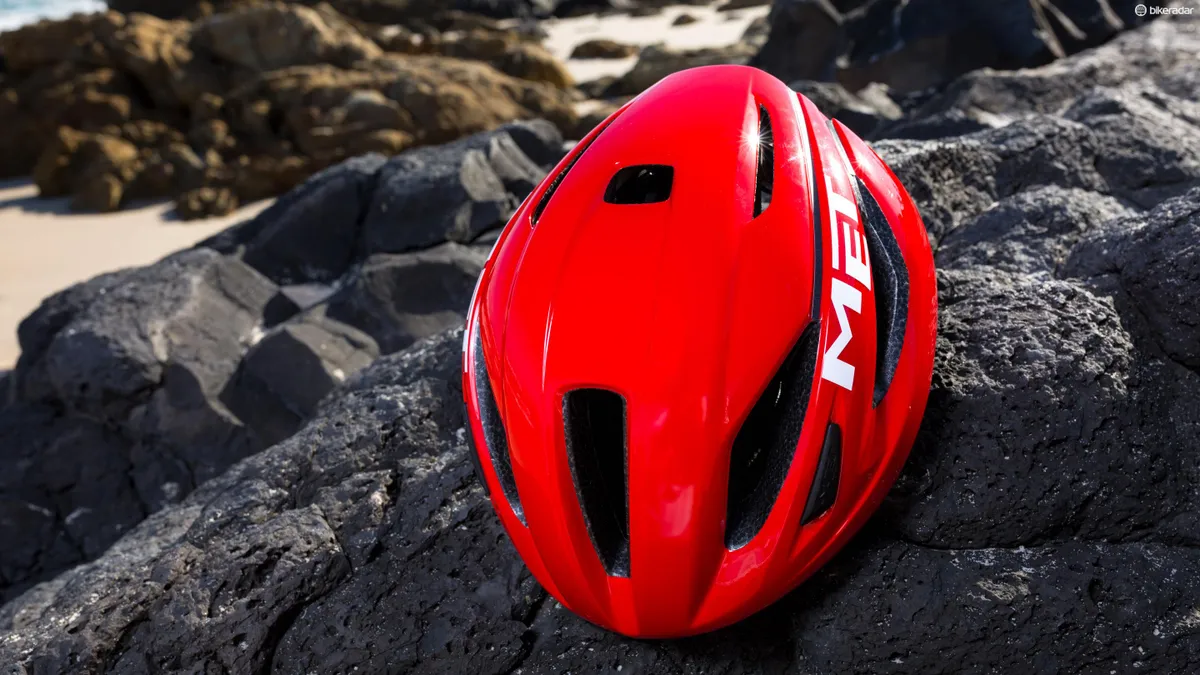
The Strale has only 14 vents, but each has decent channelling and a mostly unblocked path straight out the back of the helmet. It’s clear MET has opted for the quality not quantity approach to venting with this helmet, but does the venting stack up?
I’ve been using this helmet during the Australian summer, it been a hot one, and have definitely suffered from a sweaty head and experienced plenty of sweat dripping into my eyes and down my sunglasses while wearing this helmet. Despite it feeling as if there is good airflow passing over your head, especially at higher speeds, the Strale hardly competes with more open helmets like the Specialized Propero II, and some alternatives have double the number of vents and deeper channelling too.
I also found that unlike the larger vents at the top, the channelling under the brow of the helmet was almost completely blocked by the retention system and padding, which hampered flow coming in under the front.
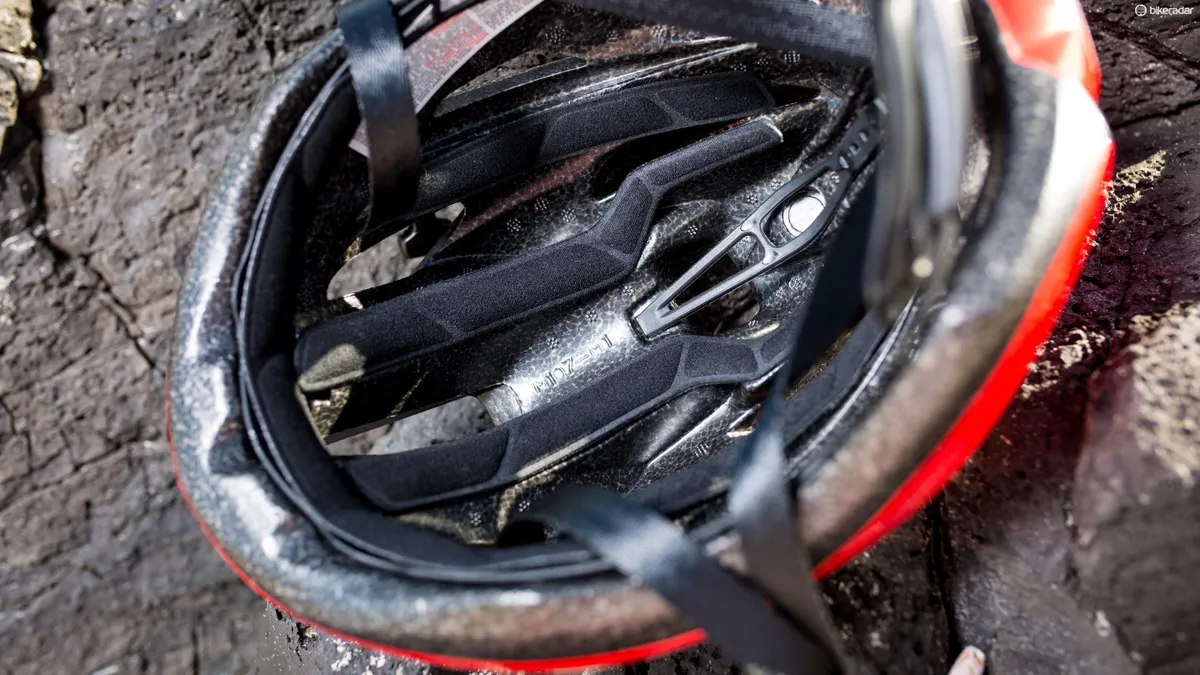
Given the compact shell, snub tail shape and number of vents I'm honestly surprised MET hasn’t pitched this helmet more in the aero rather vented category. The Strale makes no mention of any aero advantage in relation to the Venturi effect, while the Rival HES, which uses the same concept, says it creates “the maximum air intake with the lowest drag possible.”
Fit wise, the Strale is available in two sizes M (52-58) and L (59-62) and is based around an egg-shaped head form, which seemed to work with my noggin, though those with more rounded heads may not have the same luck.

The Strale also gets MET's Safe-T Duo retention system, which features four height positions and 4cm of adjustment. As with the majority of modern retention systems, a micro-adjustable dial changes the circumference of the helmet and instead of just cinching down from the back, the dial tightens a pliable plastic headband that encompasses the wearer's entire head in an effort to apply even pressure throughout. With plenty of space between the bottom of the shell and retention system it’s ponytail friendly too.
The Micro Adjust dial is also compatible with the Duo LED light. Weighing just 6g, the three LED rear light has steady and blinking modes, and is powered by a coin cell battery. It won’t replace your regular tail light but provides some added visibility. There is also a reflective strip on the rear of the helmet.
MET has opted for adjustable strap dividers over fixed dividers. Personally, I’m partial to fixed dividers because they sit flatter and suit the majority of people. That said, with the dividers MET has used I was able to get the straps to sit flat with minimum fuss and they close with a satisfying snap too.
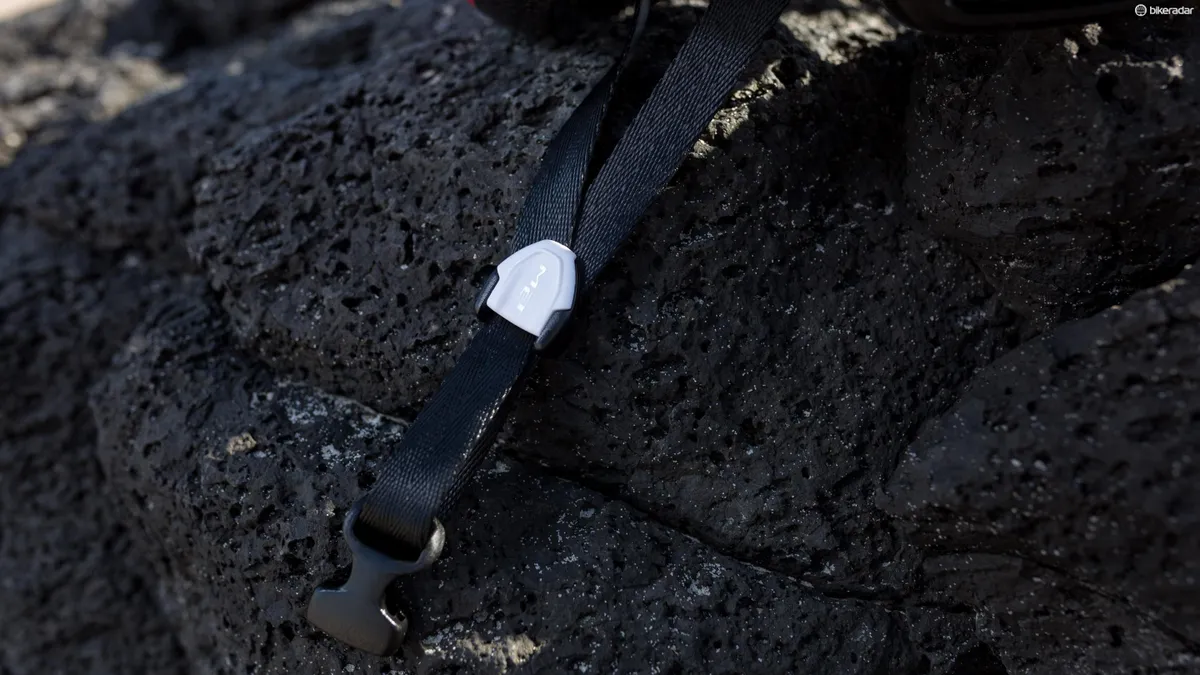
Overall, the Strale is pretty light weight, only tipping our scales at 230g in a size medium. It's rather thrifty too, priced at £79 / €89 / $TBC / AU$139, but there are a couple of concessions made for this price. The most notable is the shell, which stops short at the bottom of the helmet leaving a good bit of EPS foam exposed, so it’s susceptible to gashes, gouges and dings. Manufacturing a full shell that does cover the EPS under the brim adds a bit to the price and so it's a common cost saving measure for helmets — but it's definitely a feature worthy of a few extra bucks.
If you don't have a heap to spend on a lid and are looking for something that's lightweight, comfortable, offers decent ventilation and looks great, the Strale won't let you down.

